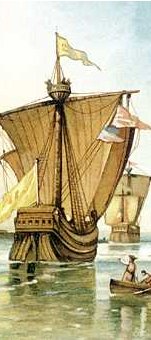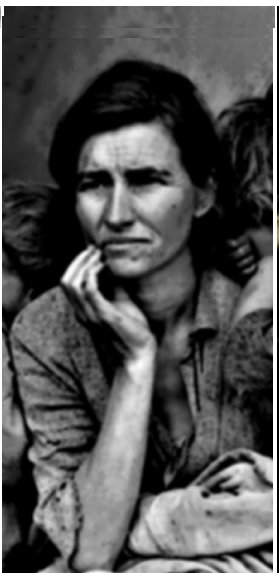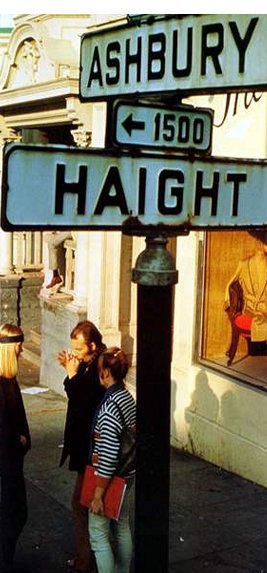Iron All Star Irving Martin Del Campo
William Francis Deverell
is an American historian with a focus on the nineteenth and twentieth century
American West. He has written works on political, social, ethnic, and
environmental history. Currently, he is working on a book exploring the history
of the post-Civil War American West. His graduate students at USC work on a
variety of topics on the history of the West, ranging from the West's racial
and ethnic history, to the rise of conservative politics in the Southwest.
Nothing in the nineteenth century
changed America
as much as the railroad, and no railroad was more
crucial than the transcontinental line, the slim iron ribbon that tied the east
of the nation to the west. In his book Railroad Crossing: Californians and
the Railroad, 1850-1910, William Deverell
describes the friendship created by the iron all star and the young nation,
particularly in California. His
book illuminates the chaos of industrial America
from the middle of the nineteenth century until the first decade of the
twentieth. Due to the ¡¥boom of prosperity¡¦ in California
coming from the Gold Rush, railroads were the next essential element needed to
modernize the areas that had recently become so populated and busy.1
Deverell begins his book with a brief history of the steps
leading up to the construction of the railroads and those who were behind it
all. The Gold Rush, having started in 1848, approached its end when the very
first railroads in the nation were laid out. Many different railroad companies
established themselves in their areas and began to expand. In California,
the Western Pacific Railway dominated from San Jose
to Sacramento.2 Its diverse route provided scenic views of the San
Francisco Bay area
and the mountain ranges while it still remained a solitary railway. In 1870, only five years after its
construction, the Western Pacific Railroad was merged into the Central Pacific
Railroad, which then became part of the much larger and dominant Union Pacific
Railroad. The Union Pacific, upon its completion, became the very first
transcontinental railroad spreading from the west coast of the nation all the way to the east. Yet, after it got taken over, the
Western Pacific Railroad became a busier mostly cargo railway that carried
supplies from place to place, no more scenic views and fun trips because that
seemed to be bad business.
All of the buying out of the
smaller railroad companies was a strategic move made by the ¡¥Big Four¡¦ Union
Pacific president Leland Stanford, vice president Collis P. Huntington, treasurer Mark Hopkins and construction supervisor Charles
Crocker to minimize competition and maximize profit. The Big Four, or as they
preferred to be called, ¡¥The Associates¡¦, allegedly cheated the government out
of over a million dollars in bonds through lies and corruption that deceived
the government until it was too late and the money was lost. These men
definitely did not start out as top executive entrepreneurs of the Central
Pacific Railroad Corporation; they were simply the group that took advantage of
the opportunity to gain wealth off the railroad business, which became the
nation¡¦s greatest transportation network. The four of them initially became
attracted to California when they
heard of the gold that promised riches for all. They were successful
businessmen and earned thousands from the gold, but they were confident that
the real money after the Gold Rush came to an end would be in railroads. They
successfully established the Central Pacific Railroad and made a deal with the
Eastern Pacific to begin building railroads so they could meet somewhere in the
middle of the nation and connect. Although many people in the rest of the
nation resented the Big Four because of their alleged crimes and corruption,
Californians, according to Deverell, ¡§saluted the
courage of the Big Four, canonizing them as representatives of western
entrepreneurial success.¡¨3
After
the books principal views are established, it explains the many difficult and
complicated problems that came along with the construction of the railroads. In
those years, the power of anti-railroadism could
gather a crowd which became a real problem because crowds could be persuaded to
march, vote or rally against the railroad use and
construction. Dennis Kearney, an Irish émigré, harnessed the power of railroad
opposition and before long held the seat of power in a short-lived third-party
movement. Kearney lead the Workingman¡¦s Party of California, a vocal and
active segment of San Francisco¡¦s
workers. These people faced a stagnant economy, high unemployment, and
hardening class lines. They came together to oppose what they believed had
brought them their pain and suffering- the railroads. Railroad opposition
played a big role in formulating and sustaining the Workingman¡¦s Party of
California; the issue, ¡§helped create Kearney¡¦s
viable third-party institution and remained a source of effective political
sustenance during the party¡¦s short life.¡¨4 Opposition toward the
railroad became a critical side to the hostility towards monopolies and
monopolists that led them to be disliked. The working class, having to endure
worsening conditions day by day, did not appreciate the capitalist nation that
the Big Four had created. California
began to show the old recurring outline of rich over poor and sadly continued
this only making the rich citizens even wealthier and the poor helpless souls
living on the streets even less likely to ever turn their lives around.
Though
the Workingman¡¦s Party of California began to fail after only a short while, it
did not disappear in vain. Many newspapers and journalists had joined in the
fight against the iron all star and opposed it too. More and more people began
to see that the government lost millions in the railroad business because the
subsidiary companies under the watchful eye of Charles Crocker were the ones
becoming wealthy, not the nation. Big newspapers and journals attacked the
railroad construction movement with full force. Yet, their efforts were futile.
The Big Four had become so powerful and had built such a great empire that they
simply bought out all of the offending newspapers, or would turn highly
respectable papers into mockeries by way of newspaper competition. This was
part of the Big Four¡¦s plan for the nation; they were attempting to, according
to Deverell, make the nation, ¡§think as one, and by
having less and less freelance newspapers they were able to control the
influence on peoples minds.¡¨5 After many years of fighting off the
hostile newspapers and journalists, the Big Four faced a new problem, the ¡¥Crédit Mobilier¡¦ scandal of 1872. The Crédit
Mobilier of America company was designed to limit the liability of stockholders and maximize
profits from construction. The company was the sole bidder for certain
construction contracts from Union Pacific and in 1864 was given 670 miles of
the Transcontinental Railroad to build, with the hefty fees being paid by
federal subsidies. The company also gave cheap shares of stock to members of
Congress who agreed to support additional funding. When the Crédit Mobilier calculated how
much money should be paid by the government to continue work on the
transcontinental railroad, they gave an outrageously high number that was paid.
Of course with an investigation put forth, it was found out that 72 million
dollars in contracts had been given to build a rail only worth 53 million
dollars. The scandal left Union Pacific and many other investors nearly
bankrupt and ultimately destroyed the trustworthiness of the Crédit Mobilier.
In
the many years following the transcontinental railroad continued to grow, as
did the corporate powers behind it. So much did these corporations boom that
the general public became more and more concerned to the point where, ¡§E.A.
Dickson and Chester Rowell, along with men like Meyer Lissner,
agreed that a Republican housecleaning was in order, one that would eliminate
the Southern Pacific¡¦s influence at the statewide level.¡¨6
These men recognized the heavy-handedness of the Southern Pacific, which they
were convinced, included bribery and other forms of corruption. More and more
men gathered to attempt to defeat the Southern Pacific; in 1907, they
successfully launched the Lincoln-Roosevelt League. Taking on the Southern
Pacific would be a challenge, but the men of the League knew the people of
California would follow the lead of those who stood defiant before the
¡¥octopus¡¦- a term coined up for the railroad which spread out in the nation and
seemed like an octopus with tentacles reaching everywhere. The Leagues¡¦ entry
into California politics started
in a Sacramento mayoral race in
which the Leagues candidate, Clinton White, successfully defeated the Southern
Pacific candidate. However, after the 1908 elections, the League lapsed
sleepily into public inactivity and shortly afterward, it completely
disappeared. The transition from the powerful radicalism of anti-railroad
events and moments in the 1890s to the tame conservatism of Progressivism in
the early twentieth century was striking. The nation suddenly calmed and all
the railroad opposition had died down which gave room for the ¡¥octopus¡¦ to
develop and grow into the nations most powerful business and transportation
utility.
Being
a professor at the University of Southern
California, William Deverell
thoroughly knows the history of the railroads and their development. The Big
Four is one of his favorite topics but not because of their entrepreneurial
genius but rather because of there, ¡§capitalistic behavior and corporate
domination over other railroads and opposing newspapers that tried to make them
seem evil.¡¨7 Deverell seems to favor the
enemies of the Big Four and the Southern Pacific because he disagreed with the
success of the nation coming from monopolies and huge corporations especially
in California that was focused mainly
on every man building his own fortune. Deverell
successfully does not criticize the Big Four or their opponents, but rather
takes into consideration the point of view of leaders of the big corporations
and leaders against the railroads, even though he wrote the book eighty years
after the events occurred. Deverell does his best not
to criticize the capitalistic behaviors of the Big Four and this makes his book
unbiased for or against the railroads.
William Deverell
focuses on California between
1850 and 1910, and addresses the influence of the Big Four on the development
of the nation. Particularly in California,
the railroad brought jobs and prosperity to many cities in and around the
nation- but- also devastation and suffering to others. The railroad,
once controlled and known as the Western Pacific, played a big role in the
development of California.
Primarily in the cities where the railway was begun, as in San
Jose and Sacramento,
it brought a lot of development and job offers. It completely revolutionized
the way Californians lived their lives. Now that the railroads were readily
available to them, they relied heavily on it for food and business. This boomed
the development of California and
ultimately the prosperity of the nation, ¡§allowing travel from coast-to-coast
available in eight days rather than my wagon train or months at sea.¡¨8
Criticisms
of this book are made agreeing with what Deverell
says because he is completely truthful and unbiased toward what the
Californians wanted and how they acted. Deverell
describes all aspects of the politics having to do with the railroads; he,
¡§shows the capitalistic actions of the Big Four, the actions taken by people
who opposed them and all aspects of the negative and positive effects of the
Southern Pacific.¡¨9 That is what Douglas Sackman said in his review of the book, he also applauded
his massive research conducted in order to get the point of views and aspects
on all sides of the matter going on in the period of Californian history he
wrote about.
William
Deverell successfully informs about the period
involving the railroads that he writes about, and due to his extensive research
and unbiased stance, does not favor any particular party in those times. While
the Big Four, in the eyes of the nation, seemed to be an evil and greedy group
of entrepreneurs that successfully cheated the government out of millions of
dollars, Deverell does not portray them as monsters
or selfish snobby old men; rather, he attempts to ¡§justify their actions and
beliefs while attempting to not be for or against what they did to bring
progress to California and the nation.¡¨10 Also, Deverell
does not favor the Lincoln-Roosevelt League or Dennis Kearney and his
Workingman¡¦s Part of California or any other railway opposition,
rather he fights to keep straight, honest and factual.
In
the west, particularly in California,
the race to build the railroad further and further towards the east was booming
and business went great. Deverell portrays the East
coast as ¡§the motivational force that got the Californians working harder so
that they could do better then their brothers in the East.¡¨11 The
eastern part of the United States,
already having the Eastern Pacific railway, was also building and building
further into the heart of the nation. The Big Four absorbed both the Eastern
Pacific and the Western Pacific; they made a plan to revolutionize the nations prosperity. They decided that when they were close
enough the two railroads would be united along with all of the smaller railroad
companies and the tracks that had been previously bought out, successfully
completing their ¡¥iron octopus¡¦ spread all across the nation. Without the
eastern motivation to work harder, the Californians would have never completed
the union of the railroads, making the Eastern United States
big contributors to the development of the nation.
Specific
events that occurred in California
set it apart from the rest of the nation because the circumstances only allowed
for California to be affected.
For example, all of the political party rivalries in California
could not occur in other places because in other states the railroads were not
as resented and opposed. California
gained the most prosperity from the railroads, but also an equal amount of
despair and suffering from them. The Mussel Slough shoot-out, a disaster that
occurred in the agricultural hinterlands of central California between the
Railroad Company and settlers in the area, attested that the treatment of the
settlers was completely unfair but they were so hard to deal with that, ¡§The
railroad corporation, never quite certain what course of action to take, tried
a conciliatory position one month and a firm, legalistic approach the next.¡¨12
Six men died in that shoot-out and the five men convicted of obstruction of
justice served light jail terms. In no other place in the country had there
been such a horrid case of rivalry between the capitalistic monopoly that was
the railroad company and the hard- working lower classmen that were the
settlers of the area. This set the events that occurred in California
apart than those from any other part of the nation making California
unique and set apart from the rest of the United
States.
The
idea of how much good the transcontinental railroad brought to the development
of California cannot be seen
without taking into consideration the harm it brought along also. On the
positive side, not only did the railroads bring modernization and money to the
nation but also they successfully bridged the gap between the two opposite
sides of the nation and allowed for quick and safer ways of getting there. The
east suddenly became readily available to contact and travel by the railroads
to anyone in the western part of the nation. California
especially prospered from the Southern Pacific railroad establishment and the
union of the major railways of the nation. However, the Big Four¡¦s negative
effects also changed the nation. Not only did, ¡§the capitalistic group grew
full of greed and vices and favored specific companies to use when building a
railroad or when certain merchandise was in need.¡¨13 This made sure
that those companies prospered and consequently made the smaller companies run
out of business. The corruption and scandals were the worst consequences that
came with the development and establishment of the railroads, but the positive
effects brought forth by the railroads greatly outweighed the bad. William Deverell successfully shows this in his book£á Railroad
Crossing: Californians and the Railroad, 1850-1910.
1. "California
Gold Rush." Wikipedia. 2006. 1 Jun 2008
<http://en.wikipedia.org/wiki/California_gold_rush>.
2. Deverell, William 32
3. Deverell, William 38
4. Deverell, William 47
5. Deverell, William 78
6. Deverell, William 99
7. Deverell, William 112
8. Sackman, Douglas. Amazon. 18
December 2004. 1 Jun 2008
<http://www.amazon.com/review/R2ZIBV4UTHNTGZ/ref=cm_cr_pr_viewpnt/102-0893768-8628131#R2ZIBV4UTHNTGZ>.
9. Hofsommer, Don L.. Biblio. 1 Jun 2008
<http://www.biblio.com/isbn/0520082141.html>.
10. Deverell, William 114
11. Deverell, William 118
12. Deverell, William 57
13. Deverell, William 33










